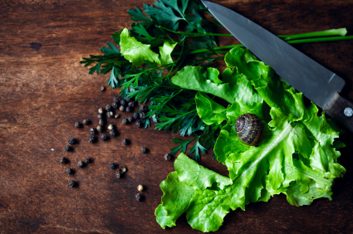
Tips from green experts
You can flex your green muscle and save money by making a few energy-wise changes in your kitchen. We asked two green-savvy experts to share their tips on everything from preparing and storing food to buying appliances.
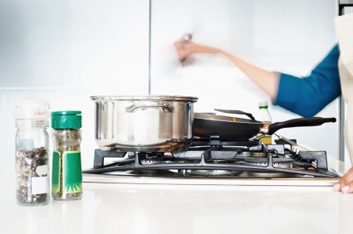
Earth-friendly fires
Use the right-sized burner
When you put a small pot on a large element, you waste heat, says Lindsay Coulter, who writes the “Queen of Green” blog for the David Suzuki Foundation’s website. With gas burners, make sure the flame is fully below the pot; otherwise, heat and energy are wasted.
Boil faster
For boiling water, an electric kettle is up to twice as efficient as a pot on the stove, says Kate Heyhoe, author of Cooking Green: Reducing Your Carbon Footprint in the Kitchen. “In addition to making tea, use an electric kettle to jump-start water for pasta, rice or steamed vegetables.”
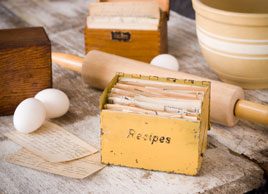
Hang on to heat
Cook with residual heat
To slash energy use when roasting vegetables or baking up a batch of cookies, turn off the oven a few minutes before the recipe indicates. “The oven will remain hot enough to finish off the cooking,” says Heyhoe. For casseroles and roasts, you can shut it off at least 15 minutes ahead of the time you expect to remove the food. (Always use a meat thermometer to ensure doneness.)
Skip preheating when you can
A good rule of thumb is that any food with a cooking time of more than 45 minutes (such as baked beans, lasagna, winter squash, baked potatoes and casseroles) can be started in a cold oven, thereby reducing energy expenditure because part of the cooking is done as the oven heats up. However, most baked goods like cookies and breads do require a preheated oven for best results. And keep the door shut. “Every time you swing open the door of a hot oven, it can lose 25 to 50 degrees [Fahrenheit], which extends cooking time and increases energy use,” says Heyhoe. Instead, keep the glass window clean so you can look through it.

No waste
Go paperless
Washable viscose cloths, including those made from sustainable bamboo (an example is Canadian Tire’s Gillett’s Bamboo Terry Dish Cloth), can soak up many times their weight in liquid, making them far more absorbent than paper towels. Also try reusable cloth napkins instead of paper, or choose paper napkins made with recycled materials.
Take the temperature
The optimal temperature range for your refrigerator to reduce spoilage and wasted energy is 35-38°F (2-3°C); the freezer should be 0°F (-18°C). If your fridge doesn’t have a thermometer, you should purchase one and check it regularly.
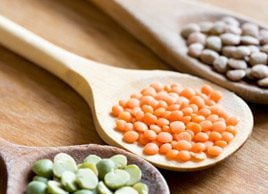
Green appliances
Get a toaster oven
“It uses only a fraction of the energy of a full-sized one and takes less time to come to the desired temperature,” says Heyhoe. She suggests using it when you’re cooking just a few chicken breasts, fish fillets or baked potatoes.
Apply pressure
“A pressure cooker can save up to 70 percent of the energy that stovetops use because foods like dried beans, whole grains and stews cook very quickly,” says Heyhoe. Plus, it keeps the kitchen cool and helps retain nutrients, and the super-heated steam intensifies flavours, so you can use less salt and fat.

Storage and leftovers
Let leftovers cool
Let foosd sit at room temperature for about 30 minutes before storing or freezing. “When warm foods are placed in the fridge or freezer, they increase energy usage since they raise the temperature of other items, so your fridge has to work to cool it all back down,” says Heyhoe. But don’t leave perishable foods out for more than two hours, to avoid contamination.
Nuke it
Microwaves can use up to 80 percent less energy than conventional ovens, so they are a green way to warm leftovers and steam vegetables. To cook food in the microwave even faster, place it on the outer edges of a rotating tray rather than in the centre.
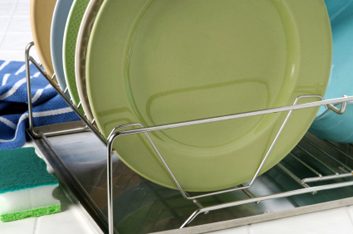
Clean and green
Be dishwasher savvy
Run your dishwasher only when full, using the light cycle and non-toxic, biodegradable soaps, advises Coulter. Most newer dishwashers do such a good job, you can skip the pre-rinse in the sink, saving gallons of water. Instead, just scrape and load. And let dishes air-dry instead of heat-dry.
Be fridge frugal
The refrigerator consumes more energy than any other household appliance. So skip automatic ice-makers and water dispensers, which increase your unit’s energy use by about 10 percent, says Heyhoe. If you have an older fridge with coils at the back, vacuum them twice a year. “They’re dust magnets, and the more dust on them, the less efficiently the refrigerator runs,” advises Heyhoe. And leave a few inches between the back of the fridge and the wall; jamming it right up against the wall forces the coils to work harder.
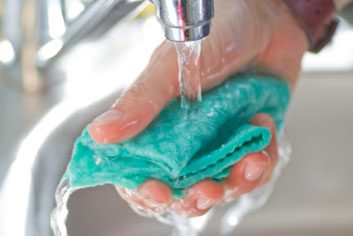
Conservation without compromise
Look to the stars
If you’re shopping for a new fridge, dishwasher or other appliance, look for the Energy Star logo, found on products that can use up to 50 percent less energy or water without compromising performance.
Be water wise
Water you’ve used for steaming can be used as part of the cooking liquid for grains or pasta. When cleaning vegetables and fruit, place them in a bowl of water and scrub them clean, rather than continually running the water. And consider installing low-flow aerators, which restrict the amount of water coming from your tap without reducing water pressure. “A faucet aerator alone can save up to 10 litres of water per minute,” says Coulter. Wow!
Related:
• 5 habits for eco-friendly food shopping
• Do “green” detergents really clean?
• 5 ways to go organic on a budget
